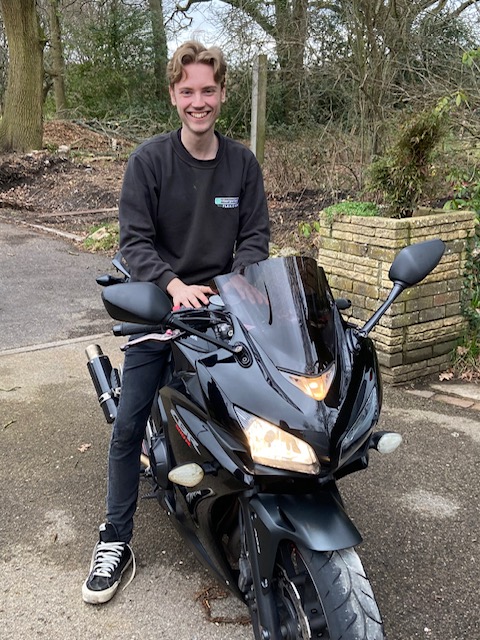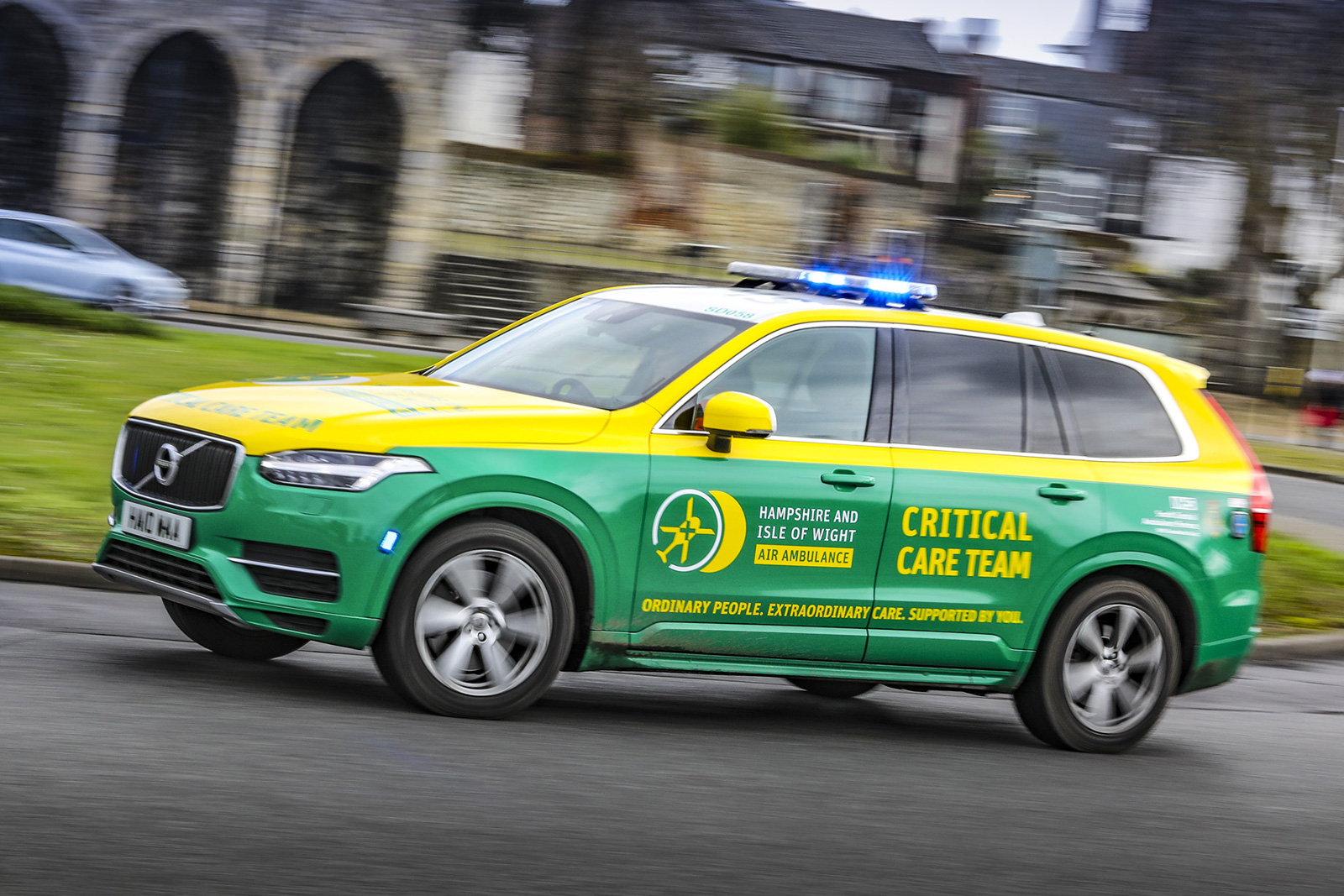With five people sadly killed on UK roads every day, we’re supporting Road Safety Week 2023 to raise awareness of the dangers of being on the road.
So far this year our teams of doctors, dispatchers, pilots and paramedics have responded to more than 248 road traffic collisions in our region.
Many of these patients sustained life- or limb-threatening injuries. But within four minutes of the call coming in, our team are airborne and en route to support our colleagues in the Fire, Police and Ambulance services.
A life saved
One of those patients was 19-year-old Louis Young.
In June 2023, he sustained a series of devastating injuries when he came off his motorbike and was sent hurtling through a barbed wire fence.

The fence had ripped off Louis’ skin and muscle, all the way from above his knee down to his lower calf. Louis had also broken his femur and sustained a traumatic brain injury.
Despite his life-threatening injuries, Louis was fortunately wearing all the appropriate protective clothing, such as body armour, boots and Kevlar jeans – without which, his condition would undoubtedly have been even more desperate.
We spoke to the team about staying safe on the roads, as a driver and a crew member, for Road Safety Week.
What is the team thinking when en route to an RTC?
Our initial focus is to locate and arrive at the incident safely, which may be by air or road. If we are driving, we need to be mindful of stationary traffic that may be building up around the incident, which route we take and finding a safe place to stop.
By air, finding a suitable landing site nearby can be challenging – and can involve landing on a road if it has been closed or in an adjacent field. We need to make sure we can get out on foot of wherever we land, sometimes this involves climbing fences or negotiating hedges. We also consider what protective equipment and clothing we may need to bring.

What are the first steps you take when you arrive on scene at an RTC?
Safety is our priority. We work closely with Hampshire Fire & Rescue and Hampshire Constabulary colleagues to consider risks to us and the patient(s). If there are multiple patients, we will need to assess each one to determine priority or take direction from the emergency services already on scene.
Once we’re at the patient’s side we then perform a rapid assessment of their clinical condition: assessing their airway, breathing, circulation and level of consciousness. Depending on what we find, we then work alongside our colleagues from South Central Ambulance Service (SCAS) to make a plan to provide treatment, facilitate extrication, if needed, and transfer to hospital.
What are the typical risks for you, the patients or other drivers when there’s an RTC?
Sometimes we work on a live carriageway, which carries risks from the moving traffic, along with some environmental challenges from vehicle collisions such as broken glass, sharp metal, leaking fuel, unstable vehicles and non-activated airbags. Fire & Rescue are experts in quickly making the scene as safe as possible and we work under their safety direction.
Drivers slowing down while driving past to look at collisions can cause considerable traffic delays and pose risks of further collisions. My plea would be that if you are stuck in traffic because of a collision ahead of you, stay in your vehicle. After initial emergency service attendance there are often further teams arriving, even if the road appears closed, it often is not.
What to do when you need help
If your vehicle has a problem, or you get into trouble on a motorway, stay calm and try to exit at the next junction or motorway service area. If that’s not possible:
- Put your left indicators on
- Move into the left lane
- Enter the next emergency area/hard shoulder
- Put your hazard lights on
- Exit out of the left vehicle door
- If possible, get behind a safety barrier where there is one – keep well away from moving traffic.
- Call National Highways on 0300 123 5000, then your breakdown provider for help.
If you are unable to exit your vehicle and get to a safe place, have stopped in a live traffic lane or feel your life is in danger, stay in your vehicle with your seatbelts and hazard lights on and call 999 immediately.








